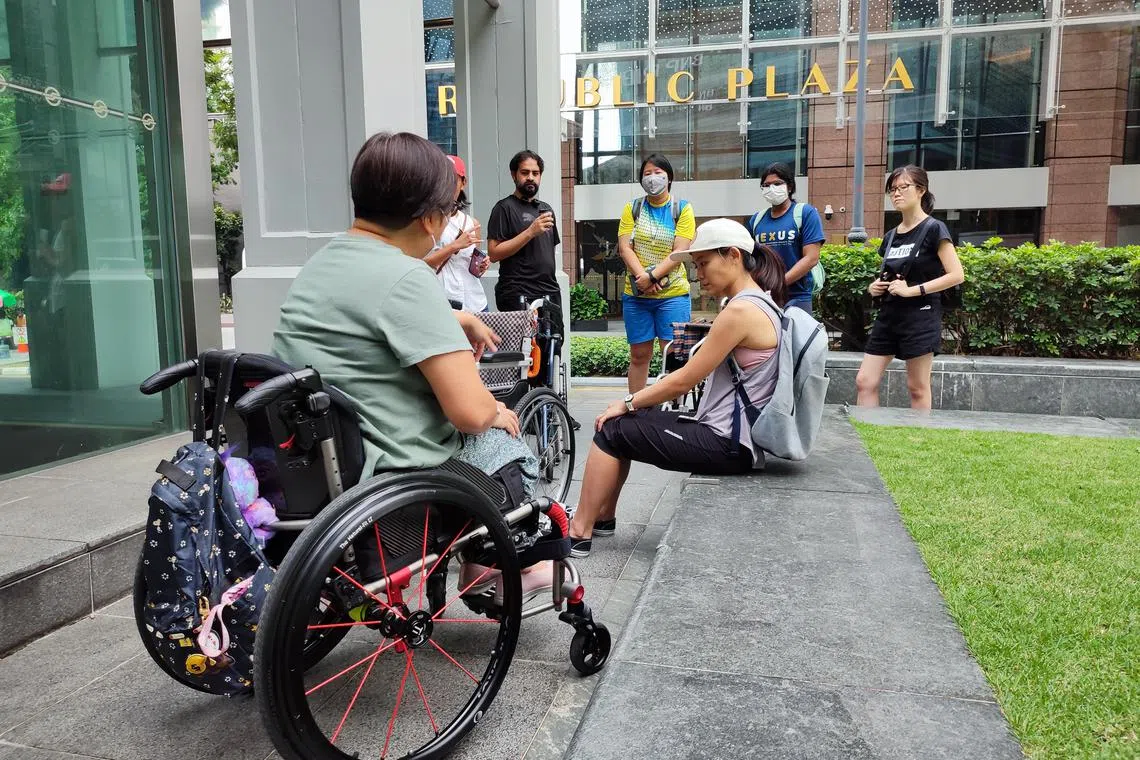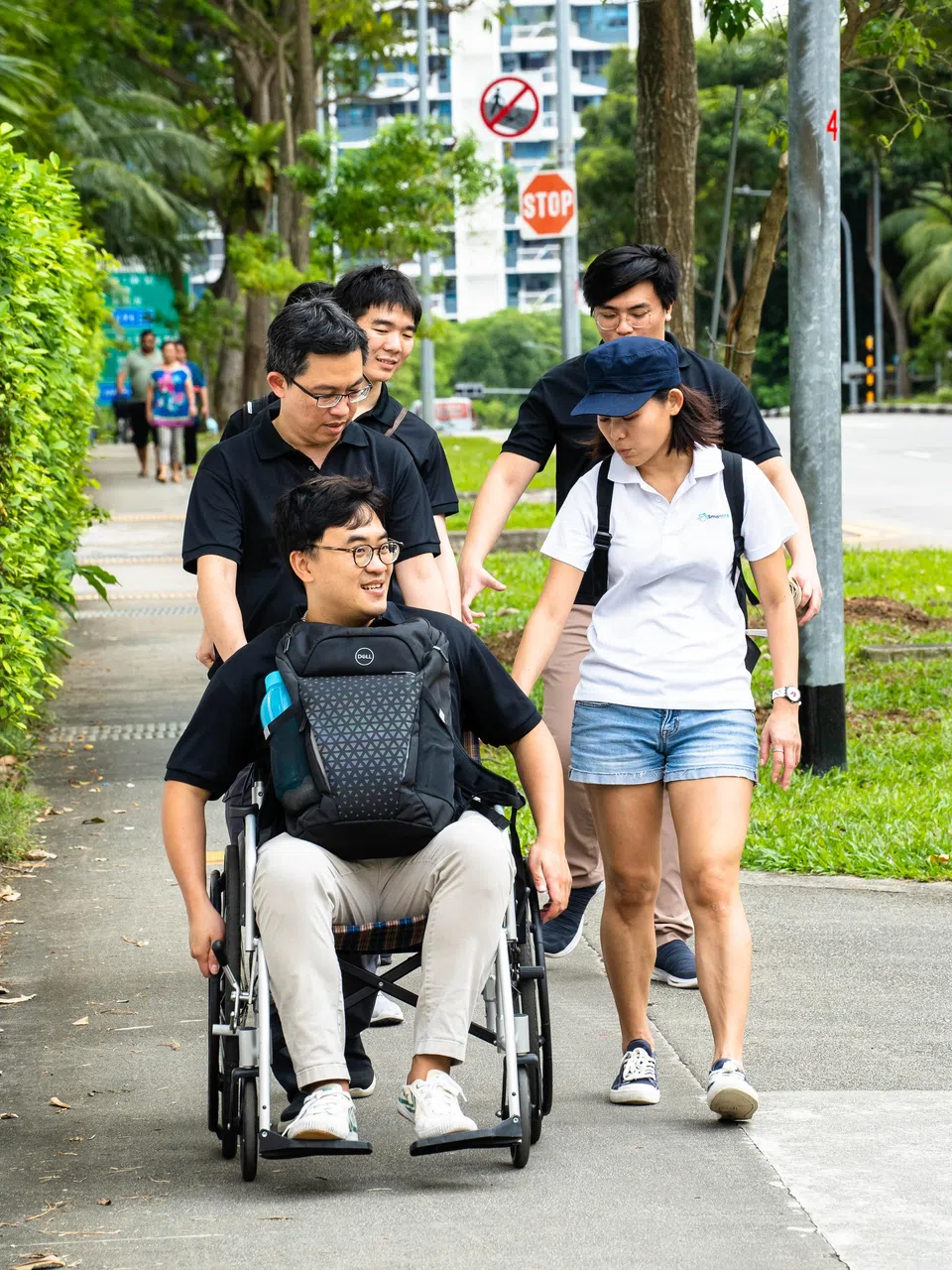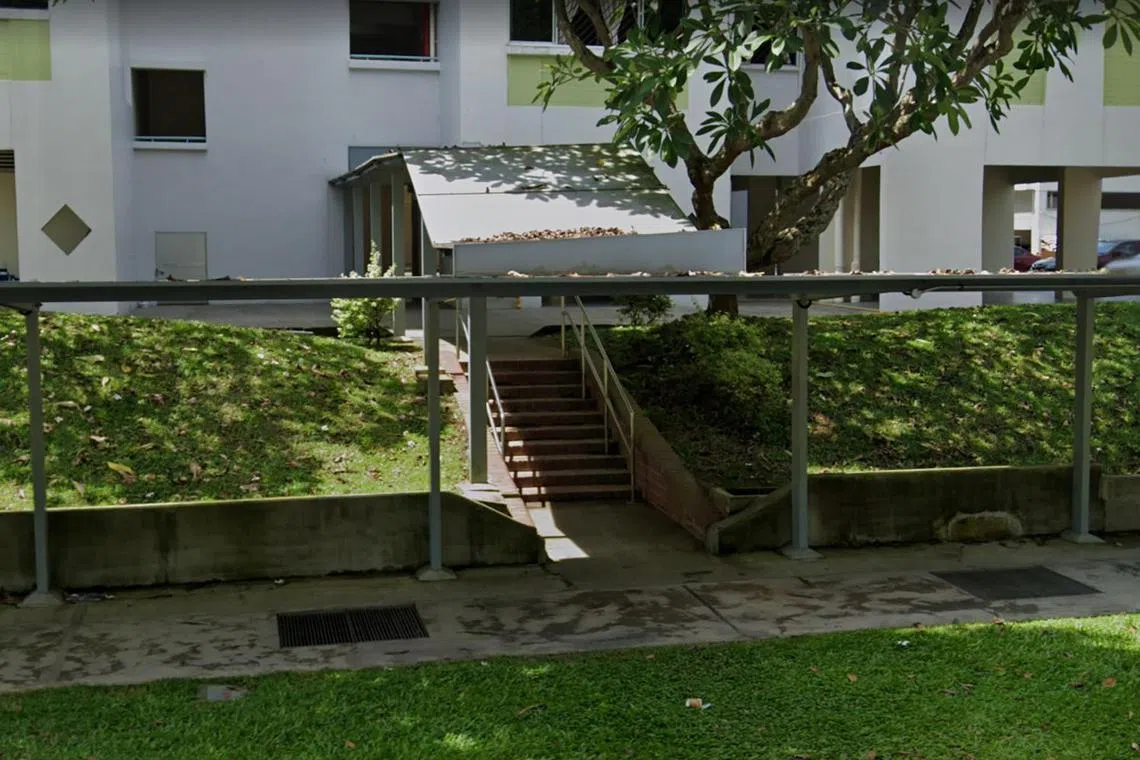Public can help wheelchair users by collecting data on barrier-free routes for new app
Sign up now: Get ST's newsletters delivered to your inbox

Volunteers attending a Wheel the Ground session organised by SmartBFA to collect data on barrier-free and accessible paths for wheelchair users around Singapore.
PHOTO: SMARTBFA
Follow topic:
SINGAPORE – An app has been launched to crowdsource data to map out barrier-free routes, which will make it easier for wheelchair users to navigate around different parts of Singapore.
The SmartBFA app, officially launched in early March, has collected data on only a fraction of Singapore’s overall pathways so far, including in areas such as Raffles Place, Bugis and Toa Payoh.
Hence, the seven-person team behind the app is calling on the public to download it – available on both the Apple and Google app stores – and start contributing by collecting data on their day-to-day journeys.
The team’s hope is that in the future, with most of Singapore mapped out to show barrier-free routes
Based on the information collected so far, the app has some basic routing ability, although that is not the main focus now as the team wants to grow the data pool first, he added.
The Straits Times first reported on the SmartBFA project in 2018, when it had set out a goal to have a functional mapping app by mid-2019.
Back then, a team of like-minded people involved in the technology industry had come together to start the project, after realising that a colleague who was a wheelchair user needed to take long detours to get around.
However, challenges came up along the way.
The original data collection method was to use fixed sensors on wheelchairs to identify barrier points.
Dr Tan Hwee Xian, also one of the project leads, said this method was slow and resulted in limited coverage, since it also asked people to just collect data on their usual day-to-day routes to minimise the inconvenience.
To improve the approach, Mr Reuber said the team decided to develop a data collection app that can be used on a smartphone – something most people have, and which already has features such as a gyroscope, altimeter and camera built in.
The team has held 32 Wheel the Ground sessions in the last two years, where team members recruit volunteers – both wheelchair and non-wheelchair users – who spend several hours each time combing an area to locate barriers and recording them through the app. They are split into pairs, with one person sitting on a wheelchair and the other pushing it.
The barriers include stairs and kerbs, which are what people may commonly think of, but can also include ramps that are too steep, or pathways that are too narrow or uneven.
Apart from wheelchair users, barrier-free access will also be useful to those with strollers or mobility issues, or delivery personnel with trolleys, among others.

The team has held 32 Wheel the Ground sessions in the last two years, with volunteers combing areas to locate barriers and recording them in the app.
PHOTO: SMARTBFA
SmartBFA is partially funded by SG Enable’s Enabling Lives Initiative Grant. The project was paused in 2020 as there was no funding, and the team is currently applying for its next round of funding from various sources.
Dr Tan said the Covid-19 pandemic also made collecting data difficult as people in general went out less. For wheelchair users, it was often even more difficult.
For example, when malls would open only one entrance, not all of them would be accessible,
Mr Reuber said the team is working with public agencies such as the Urban Redevelopment Authority and town councils to improve the accessibility of various areas, such as by flagging potholes or locations that need ramps.
The team has recruited about 170 volunteers who are using the app regularly to collect accessibility data, with 445 hours of data collected so far.
Not all the volunteers are wheelchair users – only about 20 per cent of them use a wheelchair on a day-to-day basis.

Besides stairs and kerbs, ramps that are too steep or pathways that are too narrow or uneven are also considered barriers.
PHOTO: SCREENGRAB FROM GOOGLE MAPS
One volunteer is Mr Saad Chinoy, who runs a tech-for-good company and does not use a wheelchair.
The 40-year-old first came to know about SmartBFA about a year ago, and has been a regular volunteer since.
“A lot of tech nowadays is being used for entertainment purposes, but I am very passionate about applying tech in a meaningful scenario to help people,” he said.
Volunteering with SmartBFA has helped him better understand the difficulties that wheelchair users face when getting around.
“Within the first five minutes of sitting in a wheelchair for the first time, I was like, ‘Oh, I get it now’,” he said.
Mr Saad, who lives in Geylang, said he is surprised by how difficult it is to get around his area.
“There are a lot of narrow streets, small shops that put their tables, chairs or bins in the walkways, or areas that are missing slopes or a small ramp to get around kerbs,” he said.
Volunteer Irene Toh, 64, a retiree who used to do administrative work, hopes the app will help cut down her travelling time. She and her husband, who both had polio, use motorised wheelchairs.
“It will help us map out routes so we don’t have to go all the way to the end, realise there is an obstruction, and then make a U-turn back. It gives us more confidence to reach the place we want to go and know how much time we need to get there,” she said.
She added that she hopes more people will be aware of the challenges that wheelchair users face.
“When these barriers are removed, it will empower wheelchair users to lead independent lives and allow them to enjoy new experiences with their family members and friends,” she said.



